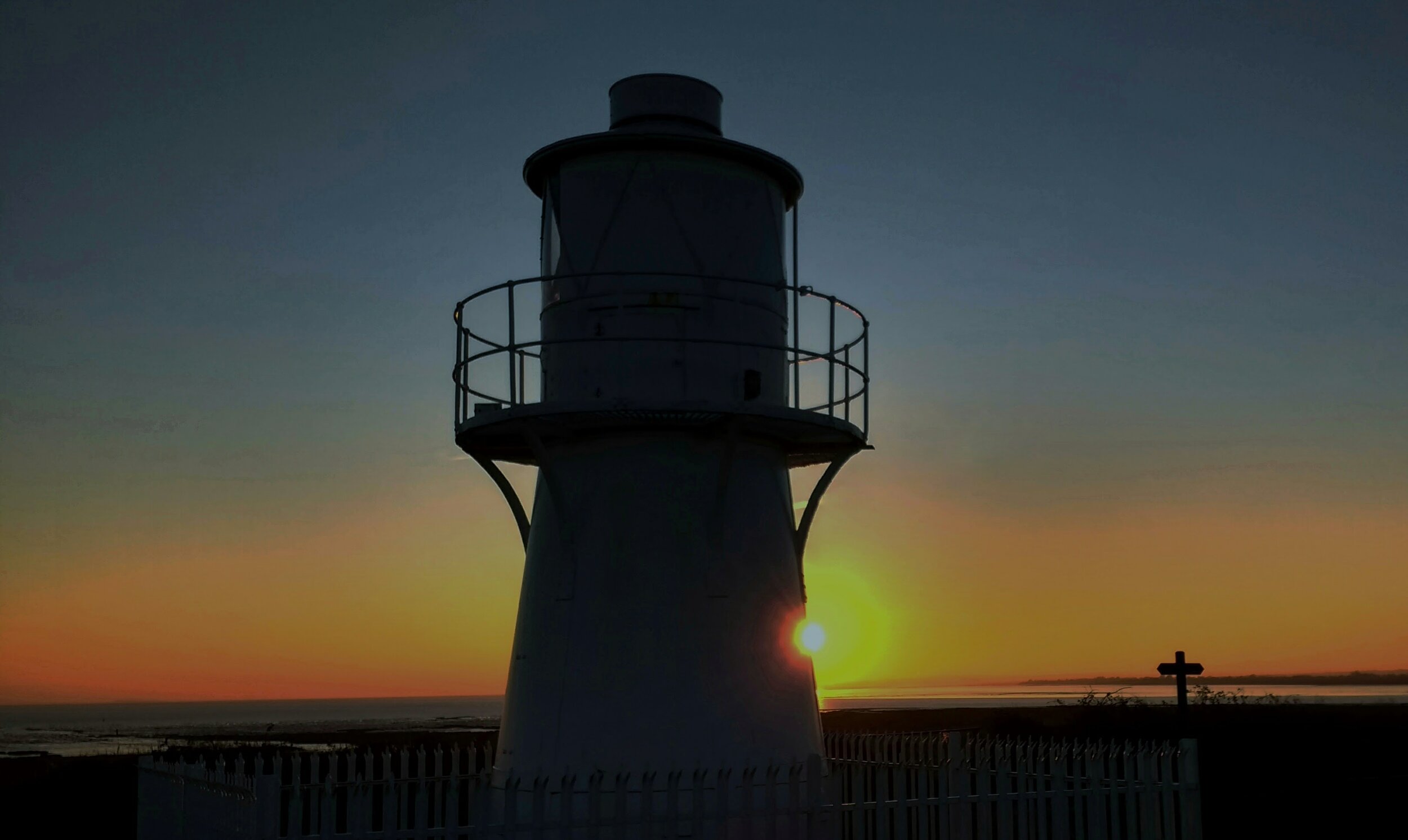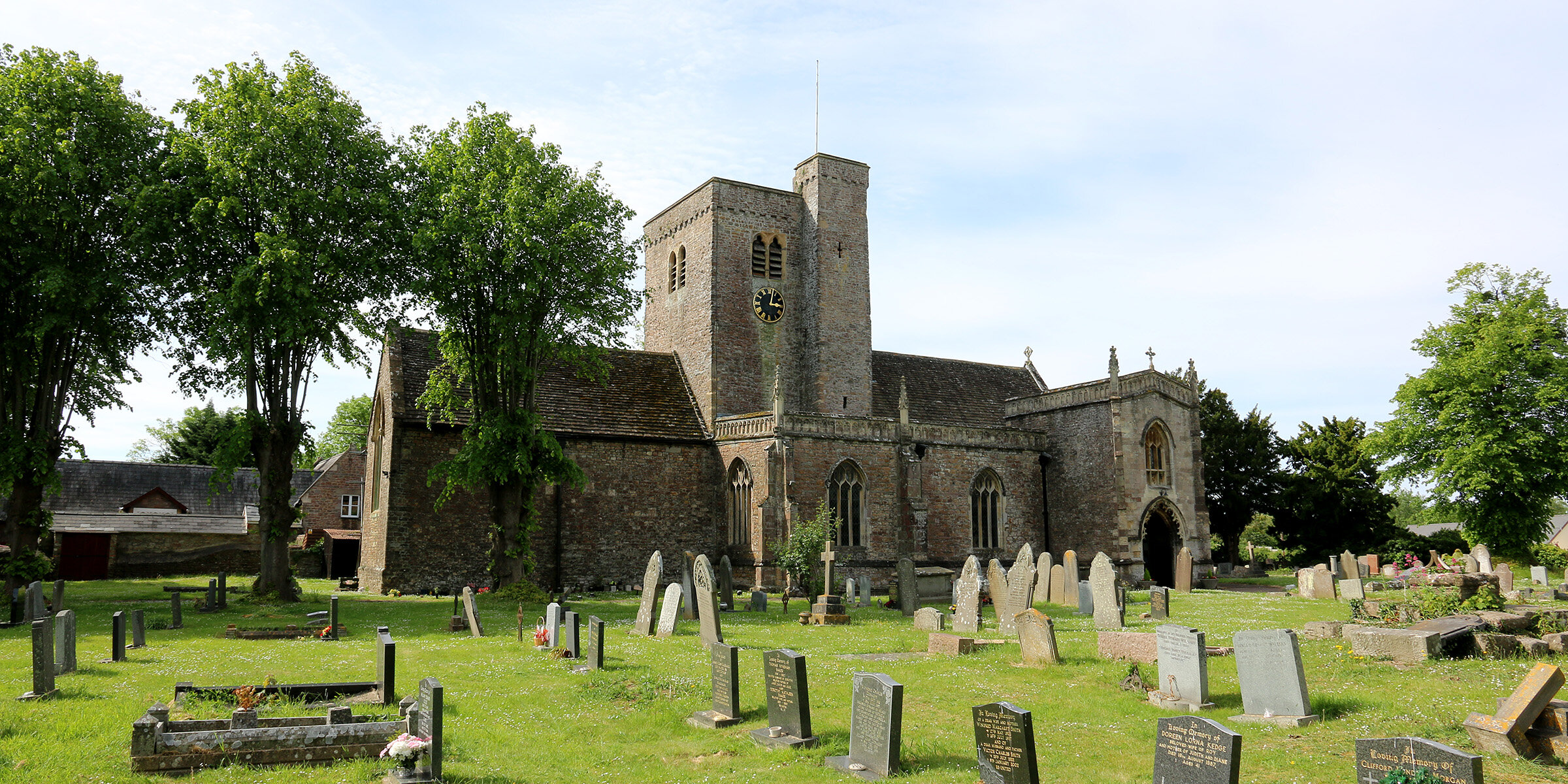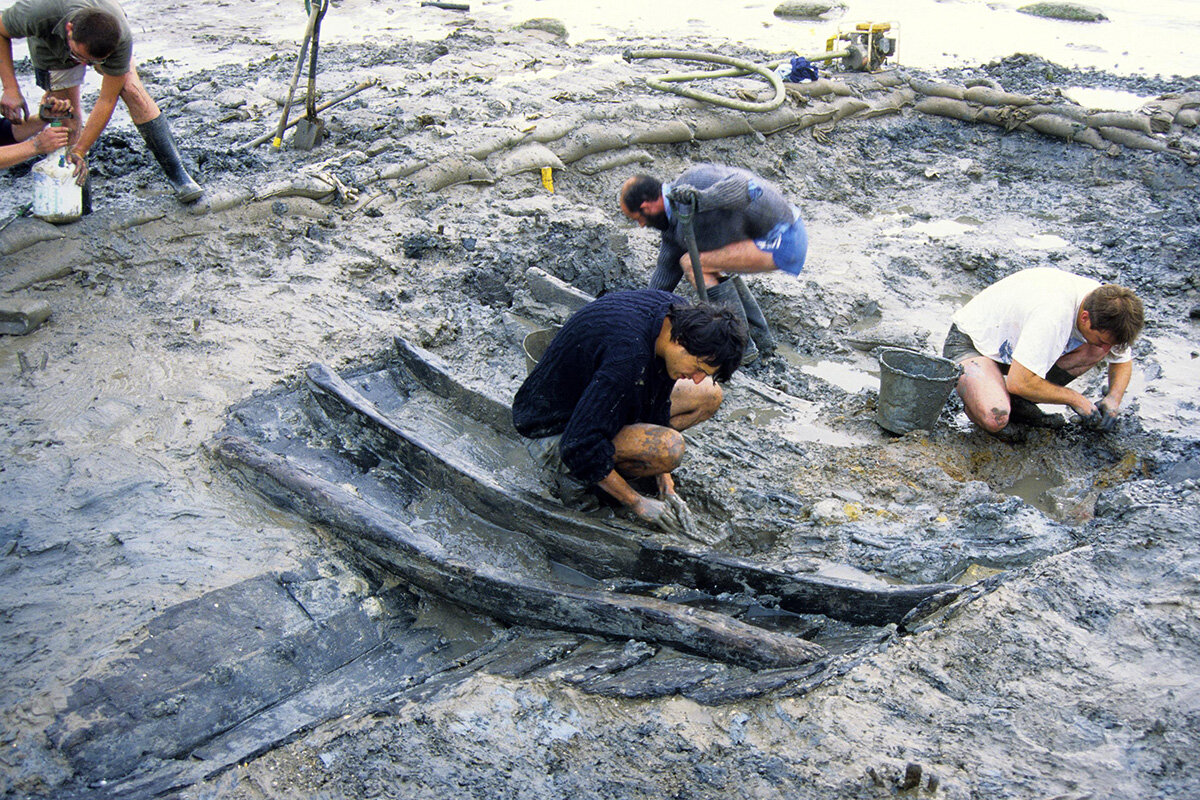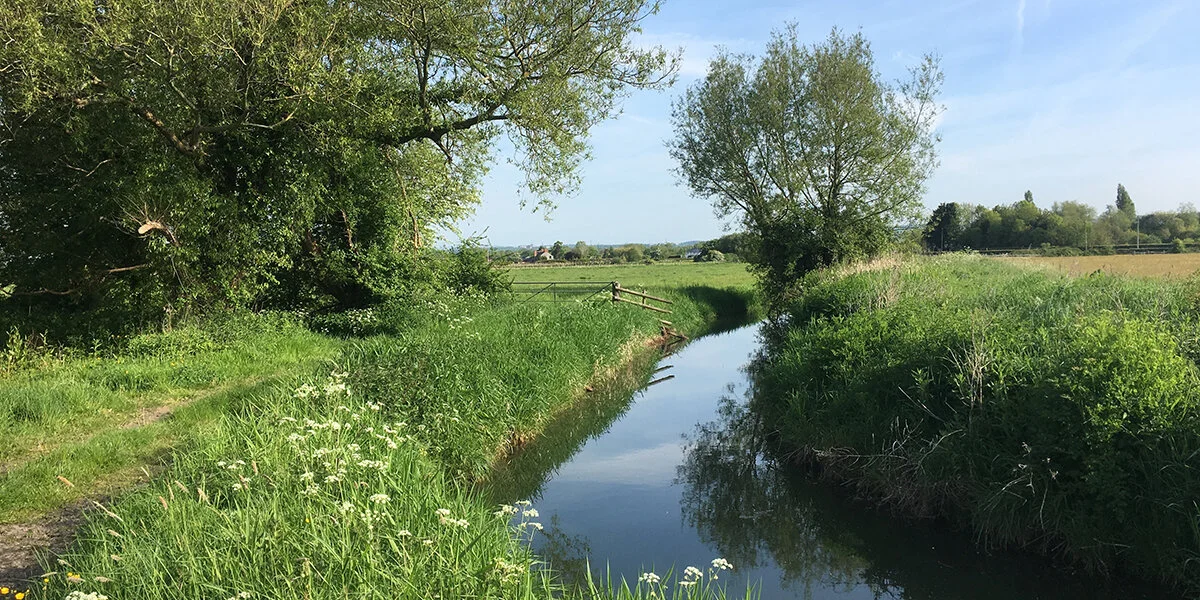In about 1113, the Norman Lord of Caerleon, Robert de Chandos, granted land at Goldcliff to the Abbey of Bec, near Rouen in France, for the founding of the Benedictine Priory of St Mary Magdalene.
The priory was built on Goldcliff ‘island’, an area of high ground at the coast, and initially included around 200 acres of ‘moorland’ between Goldcliff and Nash. Unusually, the monks at Goldcliff are recorded as wearing white habits; Benedictine monks usually wore black.
The land at this time was probably open salt-marsh and seasonal rough pasture, only suitable for grazing in the dry summer months, whereas it was regularly flooded by the incoming tide during the winter.
To improve the land, the monks repaired and extended the sea wall along the coast towards the mouth of the River Usk, and built a network of ditches, or ‘reens’, to control water levels. Many of the reens followed existing streams and creeks, creating the characteristic pattern of irregularly shaped fields and winding lanes that can still be seen today. The monks may also have been responsible for building the Monksditch, the major reen down the western side of Whitson.
By the end of the 13th century, the Priory held most of the higher coastal land between Nash and Goldcliff, along with large parts of the inland back-fen, land at Coldra, near Caerleon, and estates in Devon and Somerset. It also owned a tannery, profitable mills at Magor, Undy, St Brides and Milton, and valuable salmon fisheries, making it one of the richest Benedictine priory in Wales; in 1291 the priory’s assets were valued at £164 (equivalent in modern values to £120,000). At this time, there were around 25 monks at the priory.
Artist’s reconstruction of how the Priory may have looked circa 1250 (Dextra Visual)
The priory’s fortunes began to change for the worse when war broke out with France in 1295. Goldcliff was seen as an ‘alien’ priory (one attached to a foreign monastery) and became subject to regular demands for payment from the Crown throughout the fourteenth century. Mismanagement, corruption and natural disasters further diminished the priory’s fortunes.
In 1318, prior Ralph de Runceville was dismissed from his position by the abbot of Bec and was replaced by William de St. Albino. Unfortunately for prior William, Ralph refused to leave and held the priory for six months, during which time he “broke the treasury of the priory, and took and carried away the chalices and other silver and gilt vessels…”. He also used the priory seal to give away land (‘quit-claims’) and charge …’the priory with divers debts.’
After Ralph was finally removed, prior William’s woes continued. He was personally assaulted by seventeen Welshmen on his land at Morburne (Moorbarn, near Nash). They imprisoned him for seven days and then took him to Usk castle, where he was held until he paid 100 marks (perhaps £50,000 today). To add insult to injury, they also stole horses and cattle from priory lands at Morburne, Nash and Coldra.
Further natural disasters followed in 1324, when storms caused serious flooding on the Levels, causing a drastic fall in income.
In 1331, prior Phillip de Gopylers was charged, along with several others, with stealing wine from a shipwreck off the coast at Goldcliff. Although Philip was never convicted of the charge, the dispute rumbled on until 1334.
In 1332, the king replaced prior Phillip with a monk from Tintern Abbey, William Martel, who claimed to have letters of appointment from the pope. These letters later turned out to be a forgery, but during his short 11-month tenure as prior, William gave away priory lands in Somerset and Devon to Sir John Inge for the payment of one red rose per year for the first ten years and £20 thereafter. The priory attempted to reclaim these lands, but later settled for a payment of 100 marks from Inge in 1340.
Although William Martel was removed as prior, and Phillip de Gopylers reinstated, the damage to the priory was done; in just forty years, its value had fallen from £164 in 1291 to just £10 in 1337.
St Mary’s, Goldcliff (C Harris)
In 1424, storms and serious flooding destroyed part of the priory building, including the parish church. The existing parish church at Goldcliff dates from around this time and may have been partly constructed with stone taken from the priory (parts of the building date to 12th century and it may originally have been a barn).
By 1442, the priory had been suppressed and its assets granted first to Tewkesbury Abbey and then Eton College (founded 1440), which remained one of the largest landowners on the Levels until the 20th century. By 1467 the priory had ceased to exist. At its close, there were only eight monks left.
There are few traces of the priory today, although aerial photographs from 2010 show what might be the foundations of priory buildings around Hill Farm. The lasting legacy of the priory lies in the landscape of the Levels around Goldcliff and Nash, which still follows the intricate pattern of field and ditches laid down by the monks over 600 years ago.
What happened to the priory buildings?
During its heyday, Goldcliff priory was a large and impressive complex of buildings. Sadly, nothing now remains above ground, although an archaeological investigation in 2023 may have located some of the foundations. So, what happened to the buildings?
There are references to the existence of a ruined priory from the early 17th century, but it is likely that all trace had disappeared by the end of the 18th century. Some of the limestone was taken by local landowners as building material for farmhouses and barns (sold or otherwise ‘acquired’), some may have been used to repair the parish church in the village, but much may have been burned in the limekiln at Hill Farm to produce quicklime.
1595 map showing location of Goldcliff Priory (© British Library Board, Cotton Augustus I.ii, item number f.17)










![Wesleyan Methodist chapel Castleton (Penny Gregson)[2].jpg](https://images.squarespace-cdn.com/content/v1/5a1d5fb38a02c70db7c34f81/fe4960cd-db68-469d-8411-f5e21327e383/Wesleyan+Methodist+chapel+Castleton+%28Penny+Gregson%29%5B2%5D.jpg)























